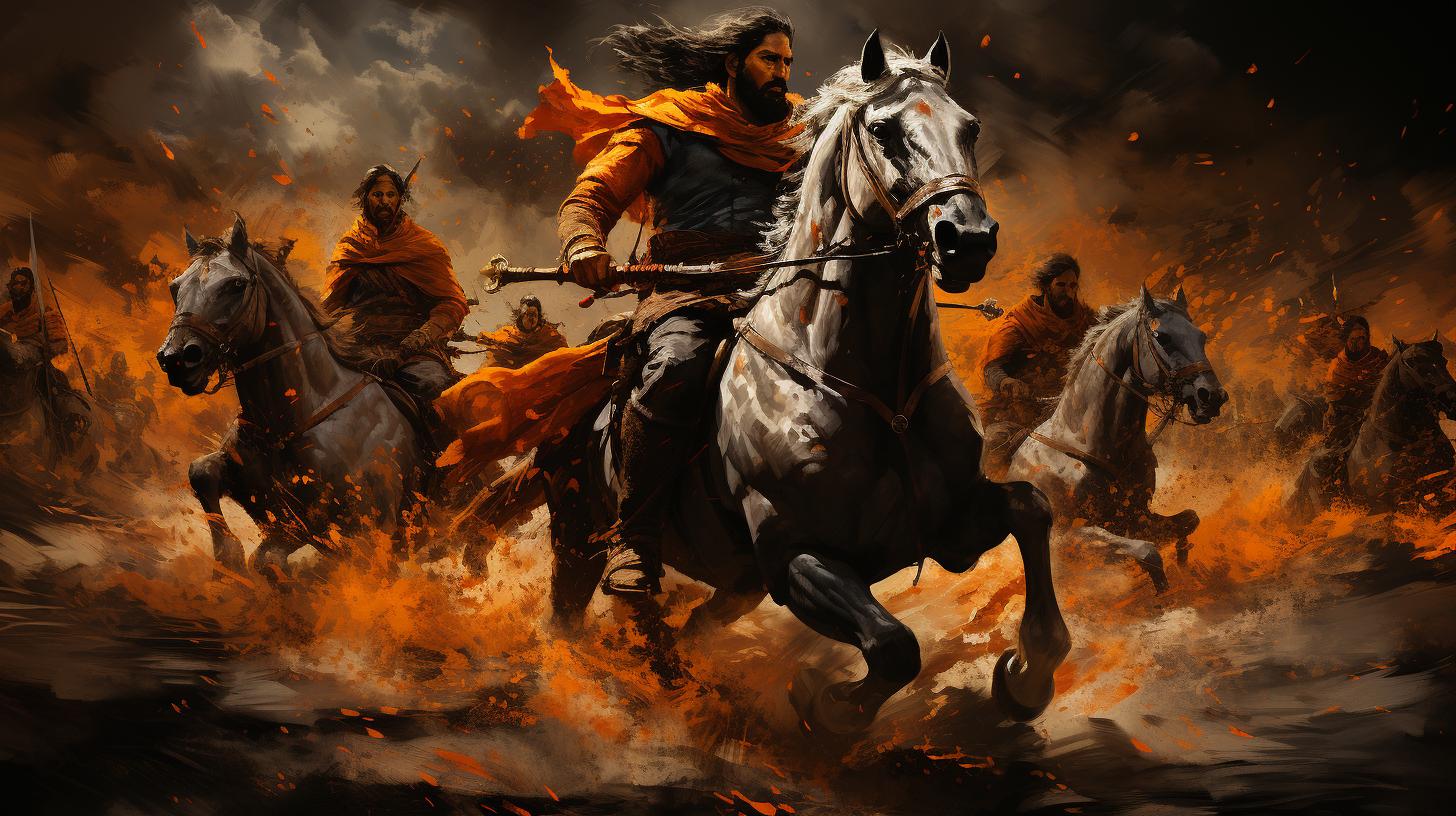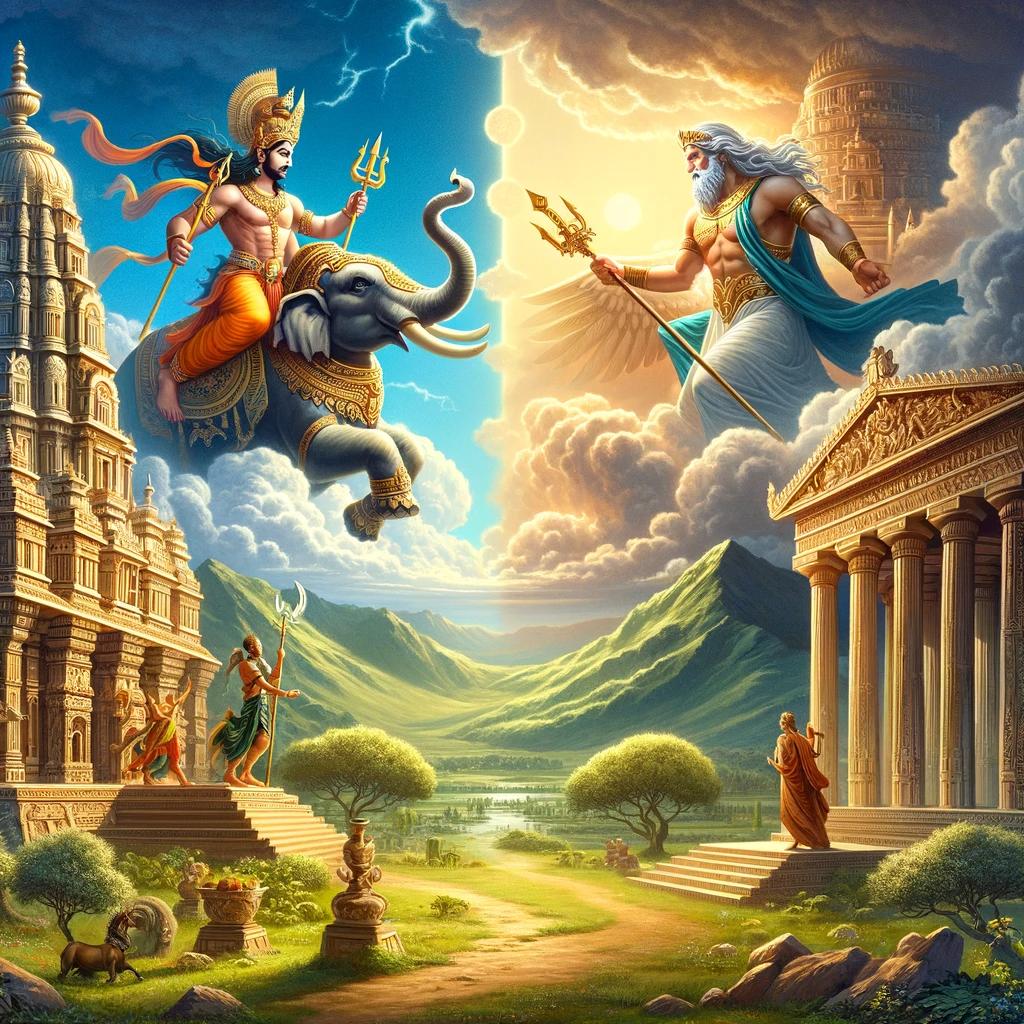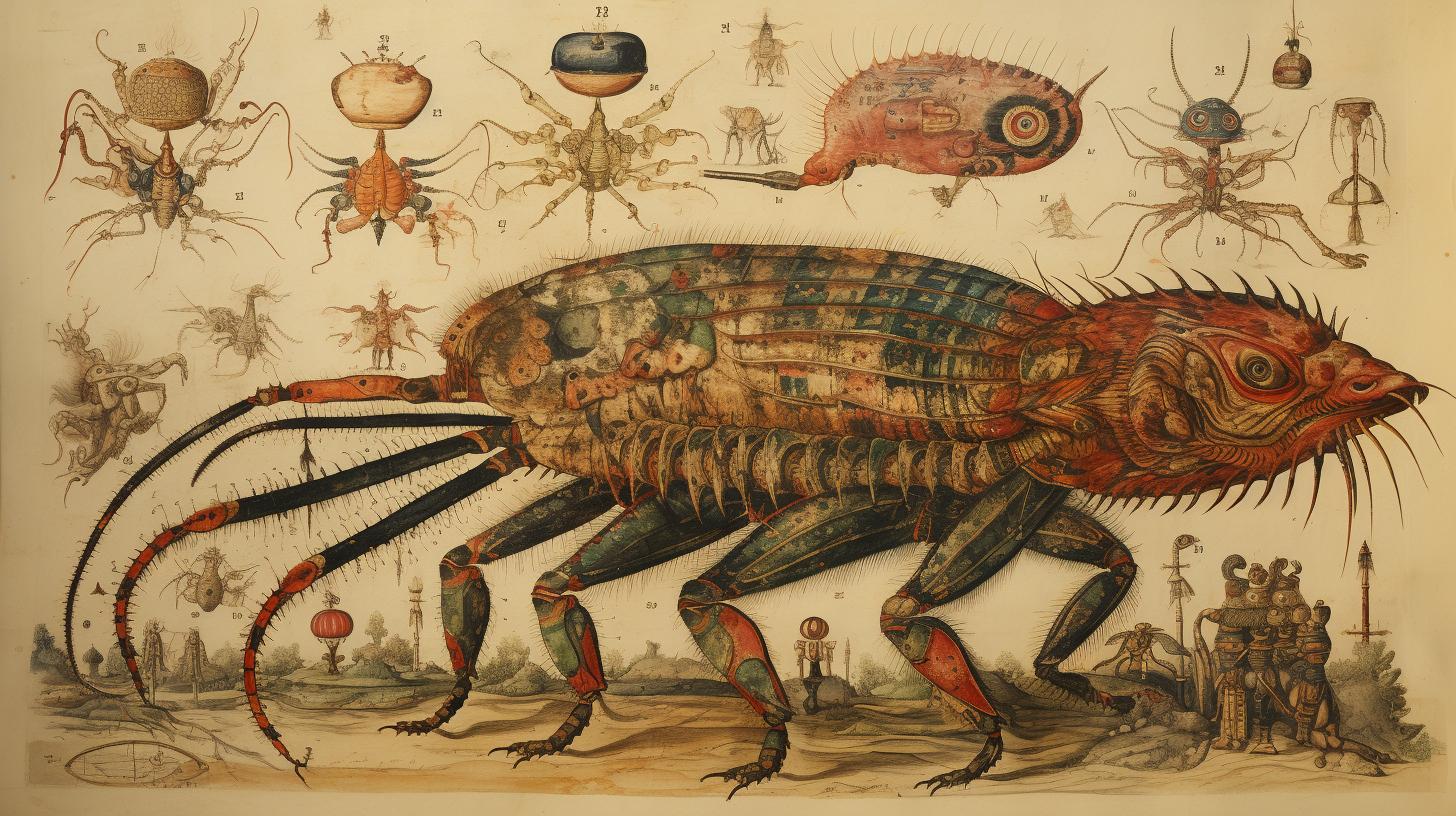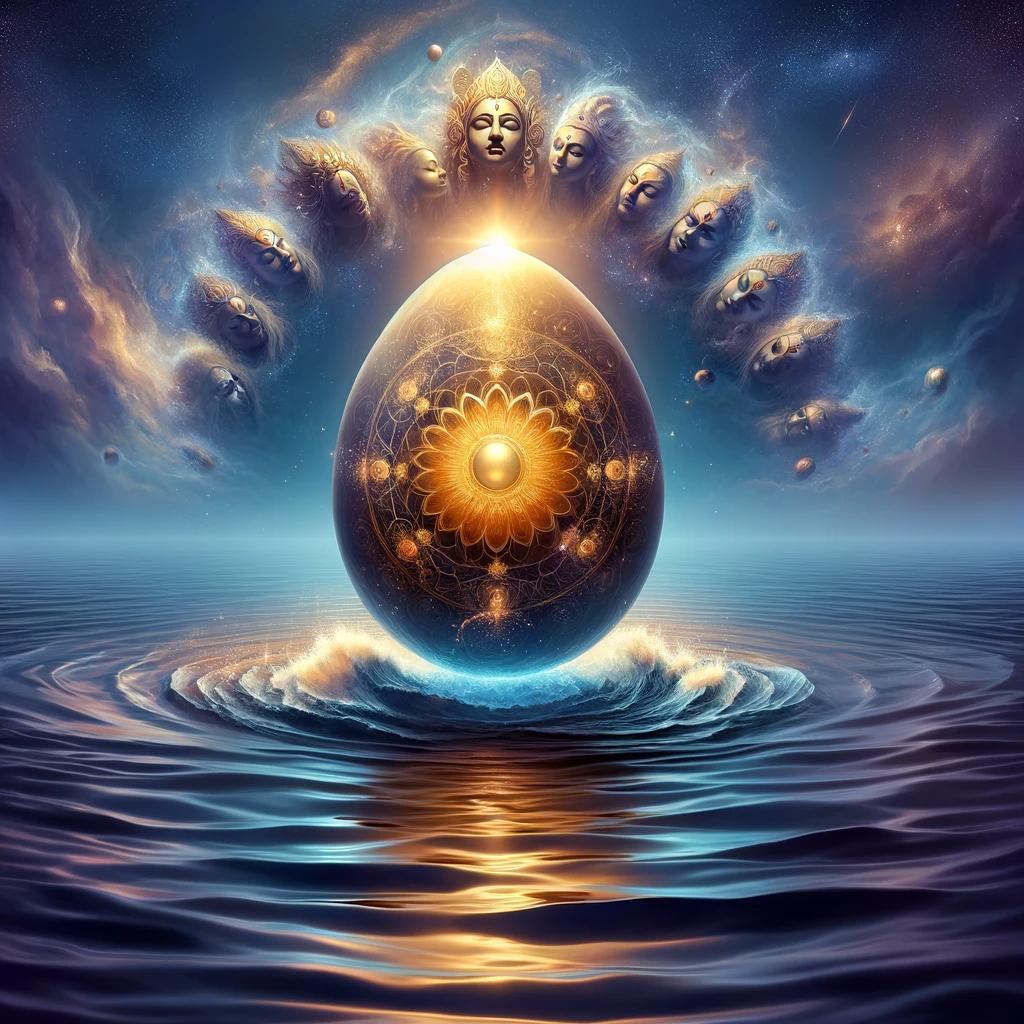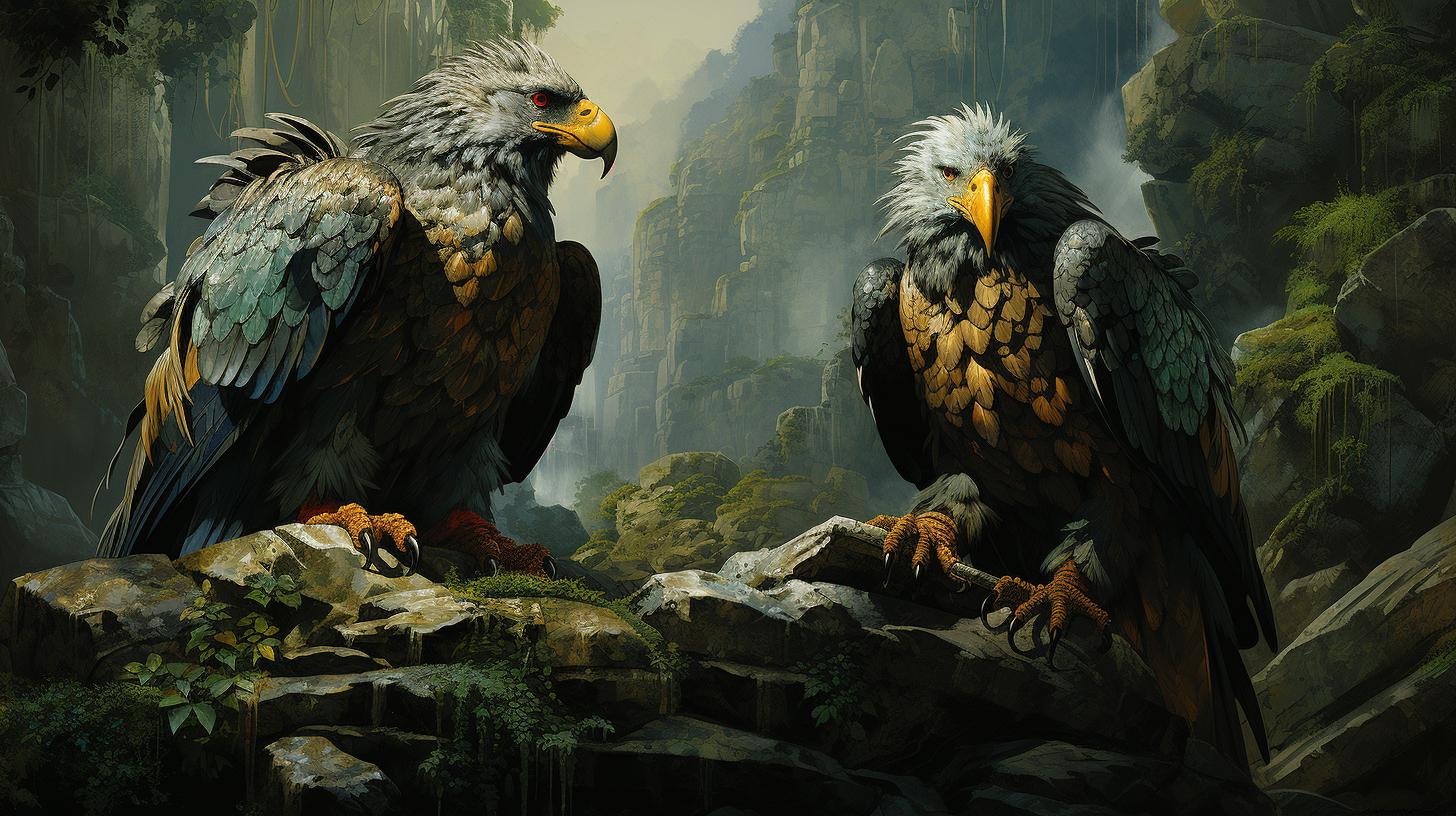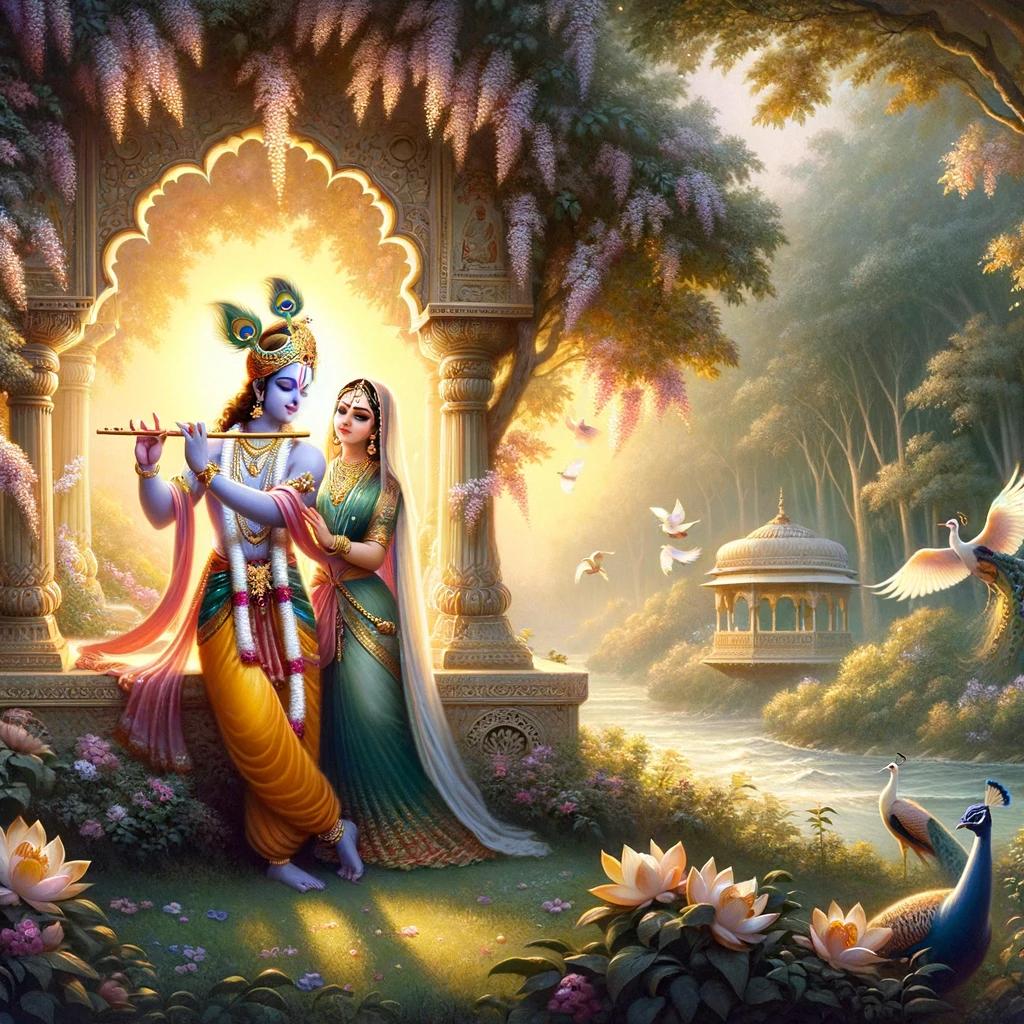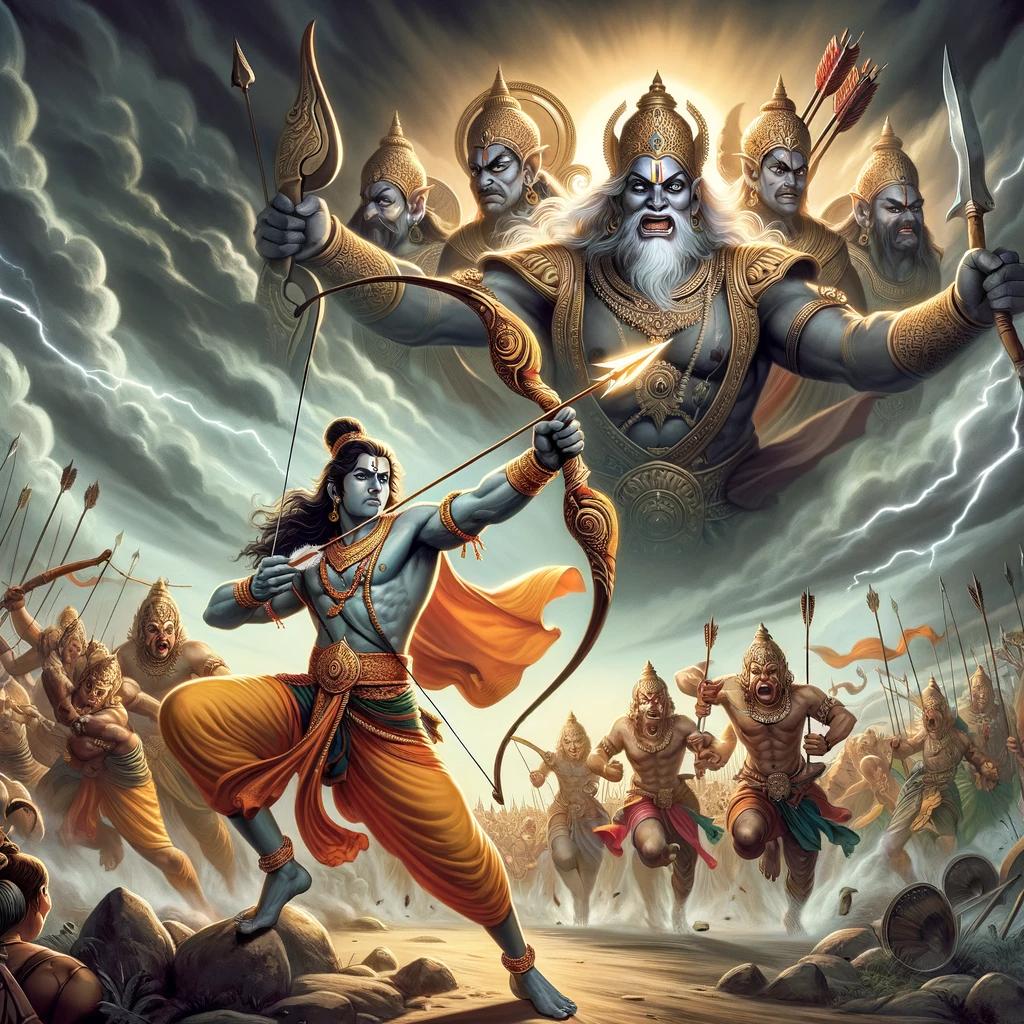Indian Mythology Animals: Exploring the Mystical Creatures of India
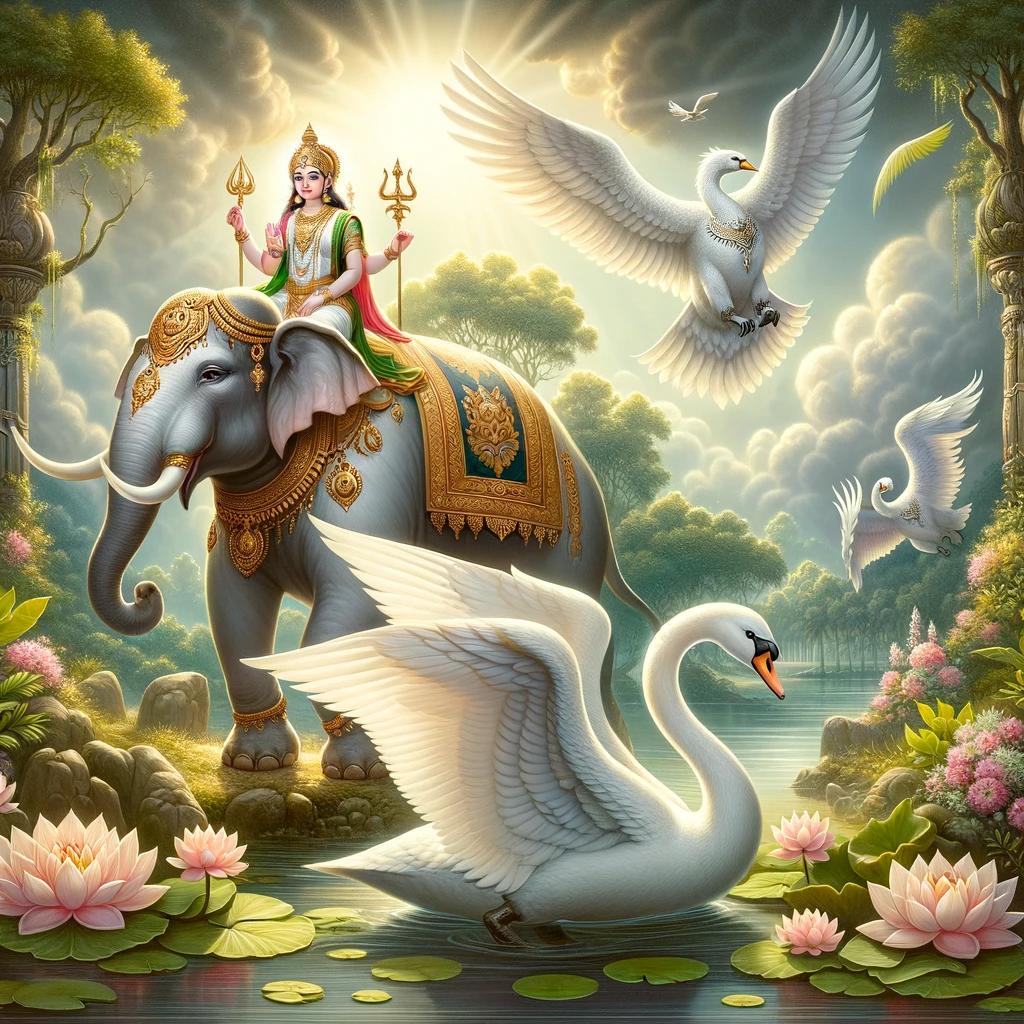
Indian Mythology Animals explores the fascinating creatures found in Hindu mythology. From the mysterious Navagunjara to the flesh-eating Rakshasa, these mythical beings have captivated imaginations for centuries.
Discover a list of monsters, the animal mounts of Hindu gods and goddesses, and the symbolic significance of these animal forms. Dive into the epic stories of Ramayana and Mahabharata, and explore the rich influence of these mythological creatures on Indian art, culture, and beliefs.
Join us on this journey through the enchanting world of Indian mythology animals.
Overview of Indian Mythology Animals
In the vast realm of Indian mythology, animals hold a significant place, symbolizing various virtues, cosmic powers, and divine aspects. These mythical creatures are not merely fictional beings but embody profound significance in Hindu culture and beliefs.
In this section, we will explore the fascinating world of Indian mythology animals and their role in shaping the rich tapestry of ancient Indian folklore.
Indian mythology is replete with extraordinary creatures that captivate the imagination and inspire awe.
From the mighty Garuda, king of birds, to the multi-faced Navagunjara, these beings are deeply interwoven into the religious scriptures, epics, and artistic expressions of the Indian subcontinent.
Through this exploration, we will come across divine mounts known as Vahanas, which are loyal companions and vehicles for various gods and goddesses.
We will also encounter ferocious monsters, such as Rakshasas, who represent the forces of evil and darkness. Additionally, we will witness the intriguing symbolism and significance behind animal forms in Hindu mythology, delving into their association with different deities and natural elements like earth and oceans.
Furthermore, we will unravel the mythical creatures mentioned in the epic narratives of Ramayana and Mahabharata, understanding their role in the larger storylines and the lessons they impart. These legendary tales not only entertain but also provide valuable insights into the moral and ethical teachings ingrained in Indian culture.
As we explore the presence of Indian mythology animals in art and culture, we will discover how their depictions in paintings, sculptures, and other artistic forms reflect the beliefs and spirituality of the people.
The influence of these mythical creatures extends far beyond mythology, permeating into daily rituals, festivals, and even modern media.
Join us on this captivating journey through the enchanting world of Indian mythology animals, where age-old tales come alive and offer a glimpse into the mystical realms of ancient India.
Navagunjara: Mystical Creature from Hindu Mythology
In Hindu mythology, Navagunjara is a captivating creature with a divine blend of multiple animals. It is believed to embody the forms of nine different animals, including a lion, tiger, deer, horse, elephant, peacock, snake, boar, and human.
Navagunjara is often described as a representation of the cosmic universe, showcasing the diverse manifestations of life.
The mythical creature Navagunjara is prominently mentioned in the Mahabharata, an ancient Indian epic. According to the legend, Arjuna, one of the Pandava brothers, stumbles upon Navagunjara during his exile in the forest.
The creature’s appearance leaves Arjuna in awe, as he witnesses the convergence of various animal forms in this extraordinary being.
Navagunjara holds great significance in Hindu mythology, representing the unity and interconnectedness of all living beings. It symbolizes the harmonious coexistence of diverse species and the intricate balance of nature in the cosmic order.
The creature serves as a reminder of the vastness and complexity of the natural world.
The tale of Navagunjara inspires deep contemplation and reflection on the interplay between different animal forms and their symbolic interpretations in Hindu mythology. It exemplifies the multi-faceted nature of existence and prompts us to appreciate the diverse expressions of life around us.
Rakshasa: Flesh-Eating Demons in Hindu Mythology
The Rakshasas are fascinating creatures deeply rooted in Hindu mythology. These flesh-eating demons are known for their immense strength and supernatural powers. Often portrayed as terrifying and monstrous beings, Rakshasas play significant roles in various Hindu epics and legends.
According to Hindu mythology, Rakshasas were born from the union of the sage Vishrava and the demon princess Kaikesi. They are characterized by their hideous appearances, with grotesque features and fierce expressions.
Rakshasas are believed to possess shape-shifting abilities, enabling them to take on different forms to deceive and harm humans.
One prominent Rakshasa in Hindu mythology is Ravana, the main antagonist in the epic Ramayana.
Ravana, with his ten heads and twenty arms, is a formidable Rakshasa king who kidnaps Sita, the wife of Lord Rama. His demonic nature and insatiable hunger for power make him a formidable adversary.
Aside from Ravana, there are numerous other Rakshasas mentioned in Hindu scriptures, each with their distinct characteristics and roles. Some are depicted as bloodthirsty man-eaters, while others may possess magical abilities and use dark arts to achieve their sinister objectives.
The stories involving Rakshasas often serve as cautionary tales, emphasizing the triumph of good over evil. They highlight the eternal struggle between righteousness and malevolence, showcasing the bravery and valor of gods, goddesses, and mortal heroes who stand up against these demonic forces.
Throughout Indian mythology, Rakshasas symbolize the darker aspects of human nature and the consequences of succumbing to base desires and evil intentions. They represent the challenges and temptations humans face on their spiritual journeys, reminding individuals to tread the path of righteousness and resist temptation.
Exploring the role of Rakshasas in Hindu mythology opens a window into the intricate tapestry of gods, demons, and mortals, providing insights into the moral and spiritual lessons imparted by ancient Indian culture.
List of Monsters in Indian Mythology
Indian mythology is a treasure trove of fascinating creatures and monsters. These mythical beings play significant roles in epic stories and symbolize various aspects of life, both light and dark.
Here is a compilation of some notable monsters from Indian mythology:
- Rakshasas: These flesh-eating demons are often depicted as terrifying creatures with monstrous appearances. Known for their strength and cunning abilities, rakshasas are often portrayed as villains and adversaries of gods and heroes.
- Nagas: Nagas are serpent-like creatures believed to be demi-gods or semi-divine beings.
They inhabit underwater realms and are associated with water bodies, particularly rivers and lakes. Nagas symbolize fertility, protection, and divine wisdom.
- Yakshas: Yakshas are half-human and half-divine creatures known for their supernatural powers.
They are often associated with forests, mountains, and natural landscapes. Yakshas are portrayed as guardians of treasures and have mischievous tendencies.
- Vetalas: Vetalas are restless spirits or vampires that can possess corpses.
They are associated with death and the supernatural realm. Vetalas are known for their ability to shape-shift, possess humans, and influence their actions.
- Pishachas: Pishachas are malevolent spirits or demons associated with darkness, night, and chaotic forces.
They are often depicted as flesh-eating creatures haunting burial grounds and dark forests. Pishachas are believed to cause madness and inflict harm on humans.
- Huldufolk: Huldufolk, also known as hidden people, are supernatural beings from folklore in the Himalayan region.
These mystical creatures are said to dwell in remote areas and possess shapeshifting abilities. Huldufolk are associated with natural elements and are often encountered by those who venture into their domains.
These are just a few examples of the diverse and enchanting monsters found in Indian mythology.
Each creature carries its own symbolism and represents different aspects of the human experience. Exploring the tales and legends surrounding these monsters offers a deeper understanding of the rich tapestry of Indian culture and belief.
Hindu Gods and Goddesses: Mythical Creatures in Hindu Mythology
In Hindu mythology, gods and goddesses often have mythical creatures associated with them. These creatures play significant roles in the stories, symbolizing various characteristics and aspects of the deities they are linked to.
Let’s explore some of these fascinating mythical creatures:
- Narasimha: This half-lion, half-human creature is an incarnation of Lord Vishnu. Narasimha represents courage and fearlessness, protecting devotees from evil forces.
- Ganesha: The elephant-headed deity, Ganesha, is adorned with great wisdom and knowledge.
He symbolizes intellect, prosperity, and remover of obstacles.
- Hanuman: Known for his immense strength and unwavering devotion to Lord Rama, Hanuman is depicted as a monkey deity. He represents loyalty, bravery, and selfless service.
- Garuda: As the mount of Lord Vishnu, Garuda is depicted as a half-man, half-bird creature.
He is believed to be the king of birds and symbolizes speed, power, and protection from evil influences.
- Nandi: Nandi, the bull, is the vehicle and divine guard of Lord Shiva. He is revered as a symbol of strength, loyalty, and fertility.
These mythical creatures are not mere companions of gods and goddesses but embody profound qualities and virtues.
They inspire devotion, instill values, and offer guidance to believers in their spiritual journey.
As we delve deeper into the world of Indian mythology animals, we uncover a plethora of fascinating creatures associated with Hindu gods and goddesses.
Each of these creatures carries its unique symbolism, adding depth and meaning to the divine tales of ancient India.
The Epic Ramayana: Mythological Animals and their Significance
The Ramayana, one of the two major Sanskrit epics of ancient India, is a captivating tale filled with adventure, heroism, and deep-rooted mythology. Within this epic, several mythological animals play significant roles, symbolizing various aspects of the story and its characters.
One such creature is Jatayu, a divine bird who encounters Prince Rama and his loyal companion Hanuman during their quest to rescue Rama’s abducted wife, Sita. Jatayu valiantly fights the demon king Ravana to protect Sita. His dedication and sacrifice represent loyalty and the eternal struggle between good and evil.
Another notable animal in the Ramayana is Hanuman, the loyal and mighty monkey deity. Hanuman is not only Rama’s devoted devotee but also a central character in the epic.
He possesses incredible strength and supernatural abilities which he uses to aid Rama in his journey. Hanuman symbolizes devotion, bravery, and unwavering faith.
One of the most intriguing mythological creatures in the Ramayana is the Vanara, a race of intelligent and powerful humanoid monkeys.
They assist Rama in his battles against Ravana and his demon army. The Vanaras symbolize loyalty, unity, and the power of collective effort.
The golden deer, known as Maricha, is another mythical creature that plays a pivotal role in the Ramayana.
This illusory creature is created by the demon king Ravana to tempt Sita, leading to her eventual abduction. The golden deer represents desire, allure, and the consequences of succumbing to temptation.
The Ramayana is replete with other fascinating mythological animals, each with their own significance and symbolism. These creatures and their roles in the epic add depth and emotion to the story, highlighting the complex themes of righteousness, honor, love, and devotion.
Hindu Mythology: Gods and Creatures Associated with the Earth and Oceans
In Hindu mythology, the natural elements of the earth and oceans hold great significance. They are not only revered but also associated with various gods and mythical creatures. Let’s explore some of these divine beings and their connections to the earth and oceans.
Vayu: The Wind God
Vayu, also known as the Wind God, is considered the divine force of the wind. He is associated with the movement of air, which affects the earth and the oceans.
Vayu is believed to be the father of Lord Hanuman, a prominent deity in Hindu mythology known for his immense strength and devotion to Lord Rama.
Varuna: The Deity of the Oceans
Varuna, the ancient deity of the oceans, is revered as the protector of cosmic order and the enforcer of moral laws.
He controls the water element and ensures its balance in the world. Varuna is often depicted riding on a sea creature, such as Makara, a mythical sea monster with the body of a crocodile and the tail of a fish.
Nagas: Serpent Deities
The Nagas, serpent deities in Hindu mythology, have a significant association with the earth and water. They are believed to reside in the underground realms and protect valuable treasures hidden beneath the earth’s surface.
Lord Shiva, one of the principal deities in Hinduism, is often depicted wearing a Naga as a sacred necklace, symbolizing his connection to the cosmic forces.
Matangi: Goddess of Pollution
Matangi, a lesser-known goddess in Hindu mythology, is associated with the pollution elements of earth and water.
She is believed to control impurities and negative energies, ensuring the purification of the environment. Matangi is often portrayed with a green complexion, emphasizing her connection to vegetation and the natural world.
These are just a few examples of gods and creatures associated with the earth and oceans in Hindu mythology. Their roles and symbolism highlight the deep reverence for nature and its profound influence on the spiritual beliefs of the Indian culture.
Mahabharata: Divine Beings and their Roles in the Epic
In the epic tale of Mahabharata, a Hindu scripture, numerous divine beings play significant roles, shaping the fate of the characters and the outcome of the great war. These celestial entities interweave with human lives, influencing the course of events.
1. Lord Krishna: One of the central figures in the Mahabharata, Lord Krishna is revered as the eighth avatar of Lord Vishnu. He acts as a diplomat, advisor, and guide to the Pandavas, helping them in their plight against the Kauravas.
Krishna imparts wisdom and provides divine intervention when necessary.
2. Arjuna: One of the Pandava brothers, Arjuna is a skilled archer and a devoted disciple of Lord Krishna. He receives a celestial weapon called the “Gandiva” from the God of Fire, Agni. Arjuna embodies bravery, righteousness, and extraordinary marksmanship, playing a vital role in the epic battles.
3. Bhishma: Known as the “Grandfather” of the Mahabharata, Bhishma is an immortal warrior blessed with extraordinary power. He takes a vow of celibacy and loyalty, serving as the commander-in-chief of the Kaurava army.
Bhishma’s strategic expertise and moral dilemmas contribute to the intense conflict.
4. Karna: Initially unknown as a Kaurava, Karna is later revealed to be a son of the Sun God. He possesses unmatched skill with a bow and arrow but faces constant discrimination due to his low birth.
Karna’s loyalty and tragic fate add emotional depth to the narrative.
5. Duryodhana: The eldest of the Kaurava brothers, Duryodhana becomes the main antagonist in the Mahabharata. His greed for power, wealth, and dominance leads to the war.
Duryodhana is a complex character driven by jealousy, pride, and a thirst for vengeance.
6. Gandharvas and Apsaras: These celestial beings, associated with music and dance, add a touch of enchantment to the epic.
They are often present during important events, presenting divine performances and bestowing blessings upon certain characters.
7. Indra and other Devas: The gods in Hindu mythology frequently intervene in the affairs of humanity.
Indra, the king of gods, and other Devas lend their divine support to various characters. Through divine boons and assistance, they shape the ultimate outcome of the Mahabharata.
8. Asuras and Danavas: These mythical creatures, representing demonic forces, also participate in the epic.
They align themselves with different factions, adding an element of supernatural threat and suspense to the story.
The Mahabharata showcases an intricate web of divine beings, mortal heroes, and mythical creatures, portraying their intricate relationships, struggles, and ultimate destinies.
Through their roles in the epic, these divine entities symbolize broader philosophical and moral concepts, enriching the narrative and providing insights into the cosmic order of Hindu mythology.
Vahanas: Animal Mounts of Hindu Gods and Goddesses
In Hindu mythology, vahanas refer to the animal mounts or vehicles that are associated with various gods and goddesses.
These divine creatures play a significant role in both mythology and religious iconography, symbolizing different aspects of deities and their powers.
- Lord Shiva, the destroyer and transformer, is often depicted riding on Nandi, the sacred bull.
Nandi represents strength, loyalty, and righteousness.
- Goddess Durga, the divine mother and warrior goddess, is usually depicted riding on a lion, symbolizing power, courage, and ferocity.
- Lord Vishnu, the preserver and protector, is commonly depicted riding on Garuda, a mythical bird with the body of a human and the wings, beak, and talons of an eagle.
Garuda represents strength, speed, and divine connection.
- Goddess Saraswati, the goddess of knowledge, arts, and wisdom, is associated with a swan as her vahana. The swan embodies grace, purity, and discernment.
- Goddess Lakshmi, the goddess of wealth and prosperity, is often depicted riding on an elephant, specifically a white elephant named Airavata. The elephant symbolizes abundance, fertility, and divine blessings.
These vahanas not only add visual appeal to religious artwork and sculptures but also hold symbolic meanings that deepen our understanding of the deities’ characteristics and their connection to the natural world.
The choice of each vahana is carefully made to reflect the qualities and attributes of the respective gods and goddesses.
Varuna: The Deity of the Oceans and his Animal Connections
Varuna, the powerful deity of the oceans, holds a significant place in Hindu mythology.
He is revered as the god of water, rain, and the celestial ocean. In Hindu cosmology, Varuna is one of the guardian deities of the four directions, symbolizing the vast expanses of the oceans.
As the deity of the oceans, Varuna has strong connections with various animals that inhabit the sea. These animal connections not only reflect the diversity of marine life but also hold symbolic importance in Hindu culture.
- Makara: One of the most prominent animal connections of Varuna is the Makara, a mythical sea creature resembling a combination of several animals. Makara is often depicted as having the body of a fish, trunk of an elephant, and the jaws of a crocodile.
It represents Varuna’s majestic power over the waters and signifies his association with aquatic life.
- Giant Sea Turtles: Varuna is also associated with giant sea turtles, which are considered sacred in Hindu mythology.
These magnificent creatures are believed to be the vehicles of Varuna, carrying him across the endless expanse of the oceans.
- Marine Birds: Birds like the albatross and seagulls are believed to be the messengers of Varuna. They symbolize his connection with the skies above the waters and serve as his emissaries.
Through these animal connections, Varuna’s influence extends beyond the realms of the oceans, enveloping the entire natural world.
He embodies the power and mystery of the sea while playing a vital role in maintaining cosmic order and balance.
Mythological Creatures in Indian Art and Culture
Indian mythology is a treasure trove of fascinating creatures that have left a lasting impact on art and culture. From intricate sculptures to vibrant paintings, these mythological creatures have been depicted in various forms, showcasing their importance in Indian artistic traditions.
One of the most iconic mythological creatures in Indian art is the Garuda, a half-bird, half-human creature. Depicted with the head, wings, and talons of an eagle, Garuda is considered the mount of Lord Vishnu. Its powerful and majestic presence can often be seen in sculptures adorning temples across India.
Another significant creature is the Nandi, a bull that serves as the mount of Lord Shiva. Nandi is often depicted in sculptures outside Shiva temples, symbolizing strength and loyalty.
It is also believed that Nandi represents Dharma, the moral and ethical principles that uphold the universe.
The mythical Makara, often portrayed as a creature with the body of a crocodile, trunk of an elephant, and the tail of a fish, holds immense significance in Indian art and symbolism.
Makara is often depicted on the entrances of temples as a guardian, warding off evil spirits and bestowing blessings upon devotees.
Other creatures like the Simha (lion), Hanuman (monkey), and Jatayu (a giant bird) are also prevalent in Indian art and culture.
These creatures are associated with various Hindu deities and have symbolic representations that are incorporated into religious ceremonies, festivals, and traditional storytelling.
In Indian textiles and paintings, mythological creatures are captured in intricate detail, adding vibrancy and storytelling to the artwork.
From embroideries depicting mystical serpents like Nagas to silk paintings illustrating divine creatures like Gandharvas (celestial musicians), the influence of mythological creatures can be seen in every brushstroke and stitch.
The presence of mythological creatures in Indian art and culture not only adds beauty and aesthetic appeal but also carries deep cultural and spiritual significance.
They serve as a reminder of the rich mythology, traditions, and beliefs that have shaped Indian society for centuries.
Legends and Tales of Animals in Hindu Mythology
Hindu mythology is rich with captivating legends and tales featuring a diverse array of animals. These stories have been passed down through generations, enchanting people with their mythical creatures and profound symbolism.
One such legend is that of Nandi, the sacred bull and vahana (vehicle) of Lord Shiva. According to popular belief, Nandi was present during the churning of the cosmic ocean and witnessed the emergence of various divine treasures.
Nandi’s unwavering loyalty and strength have made him a symbol of devotion in Hindu culture.
An intriguing tale revolves around the mythical bird Garuda, who serves as Lord Vishnu’s vahana.
Garuda is said to possess immense strength and is often depicted as a human-bird hybrid. One popular story narrates Garuda’s quest to obtain the nectar of immortality from the gods, showcasing his bravery and determination.
Another fascinating creature is Makara, a legendary sea creature with the body of a crocodile and the trunk of an elephant. Makara is often associated with water deities and is considered a symbol of authority and protection.
In Hindu mythology, it is believed that Makara guards the entrances of temples and sacred spaces.
One well-known tale is that of Jatayu, a noble vulture who valiantly fought to save Sita, Lord Rama’s consort, from the clutches of the demon king Ravana. Jatayu’s bravery and sacrifice serve as an example of unwavering devotion and righteousness.
Similar legends and tales of animals can be found throughout Hindu mythology, each with its own unique significance and teachings. These stories not only entertain but also impart valuable life lessons, emphasizing virtues such as loyalty, courage, and compassion.
- Makara, the mythical sea creature guarding sacred spaces
- Nandi, the revered bull symbolizing devotion
- Garuda, the mighty bird vahana of Lord Vishnu
- Jatayu, the noble vulture who fought for righteousness
These mythological tales of animals continue to inspire and captivate individuals, reflecting the profound connection between nature and spirituality in Hindu culture.
Significance and Symbolism of Animal Forms in Hindu Mythology
The animal forms depicted in Hindu mythology hold deep significance and symbolism, reflecting the intricate beliefs and values of the culture. These divine creatures embody various attributes and qualities that derive meaning and convey important messages.
Animal Forms as Avatars:
- The avatars of Hindu gods and goddesses often take the form of animals, representing their divine powers and abilities.
- Lord Vishnu, for example, appears as a fish (Matsya), a tortoise (Kurma), and a half-lion half-human (Narasimha), among others.
Each form has a unique symbolism related to protection, wisdom, and strength.
- Goddess Durga is depicted riding a powerful lion, symbolizing courage, fearlessness, and the triumph of good over evil.
Sacred Attributes and Symbolism:
- The peacock, associated with Lord Kartikeya, represents beauty, spirituality, and divine love.
- The elephant, revered as Lord Ganesha, epitomizes wisdom, intelligence, and new beginnings.
- The snake, commonly associated with Lord Shiva, symbolizes eternity, transformation, and the cycle of life and death.
Mythical Creatures as Guardians:
- Guardian creatures like the mythical lion-headed creature Narasimha and the half-man half-bird Garuda protect and guide individuals on their spiritual paths.
- These creatures signify bravery, loyalty, and unwavering dedication to righteousness.
Representations of Divine Powers:
- Animals in Hindu mythology often embody gods and goddesses, representing their protective and nurturing qualities.
- Lord Vishnu’s animal mount, Garuda, symbolizes unbreakable bonds, loyalty, and the ability to transcend physical limitations.
- Goddess Saraswati, associated with knowledge and art, is depicted seated on a white swan, signifying purity, grace, and creative expression.
The significance and symbolism of animal forms in Hindu mythology tell intricate stories and serve as a medium to convey profound teachings and values.
Through these representations, individuals can explore and connect with the divine qualities inherent within themselves.
Hindu Mythology and its Influence on Indian Culture and Beliefs
Hindu mythology plays a significant role in shaping Indian culture and beliefs. The captivating tales of gods, goddesses, and mythical creatures have been passed down through generations, leaving a lasting impact on the fabric of Indian society.
Let’s explore how Hindu mythology has influenced various aspects of Indian culture.
Art and Architecture
Hindu mythology has served as a major source of inspiration for Indian art and architecture. Temple carvings and sculptures often depict gods, goddesses, and mythical creatures from Hindu mythology. These intricate artworks not only showcase the skill of the craftsmen but also serve as devotion to the divine beings.
Festivals and Rituals
Indian festivals and rituals are deeply rooted in Hindu mythology. Events like Diwali, Holi, and Navratri are celebrated with great devotion and enthusiasm, honoring the triumph of good over evil as depicted in Hindu mythological stories.
Rituals and customs associated with these festivals serve as a way to connect with the ancient tales and seek blessings from the deities.
Moral and Ethical Values
Hindu mythology provides a rich tapestry of moral and ethical values for individuals to follow. The stories present in Hindu scriptures teach important lessons about righteousness, compassion, and perseverance. These teachings have shaped the moral compass of Indian society, guiding individuals in their daily lives.
Social Structure and Beliefs
Indian society’s social structure and beliefs are deeply influenced by Hindu mythology. The caste system, although a controversial aspect, finds its origins in ancient scriptures, where different castes were believed to have different roles based on their birth.
The concept of karma, rebirth, and moksha (liberation) also stem from Hindu mythological beliefs, shaping the way individuals perceive life and the afterlife.
Language and Literature
Hindu mythology has left an indelible mark on Indian literature and languages. Ancient epics like Ramayana and Mahabharata provide a wealth of literary material that continues to inspire poets, writers, and playwrights.
The characters, intricately woven plots, and allegorical elements serve as a foundation for literary exploration and expression.
Folklore and Traditions
Indian folklore and traditions often revolve around the mythical creatures and stories from Hindu mythology. Folktales and legends passed down through generations reflect the beliefs, values, and cultural practices associated with these ancient tales.
From regional customs to superstitions, these folklore and traditions add depth and richness to Indian cultural heritage.
In conclusion, Hindu mythology holds immense significance in Indian culture and beliefs. Its influence can be seen in various aspects, ranging from art and festivals to moral values and social structure.
As Indians continue to cherish and preserve their cultural heritage, the mythical creatures of Hindu mythology play a crucial role in keeping these traditions alive and thriving.
.












